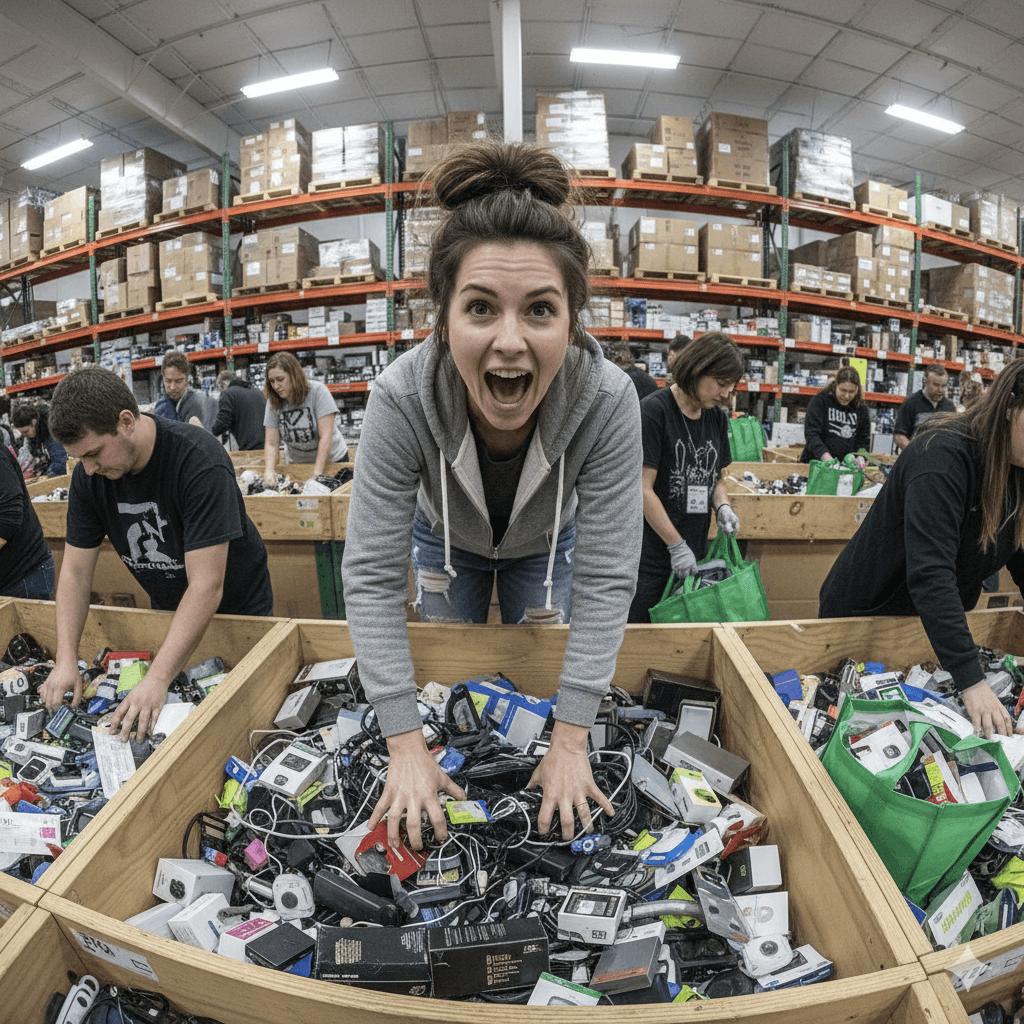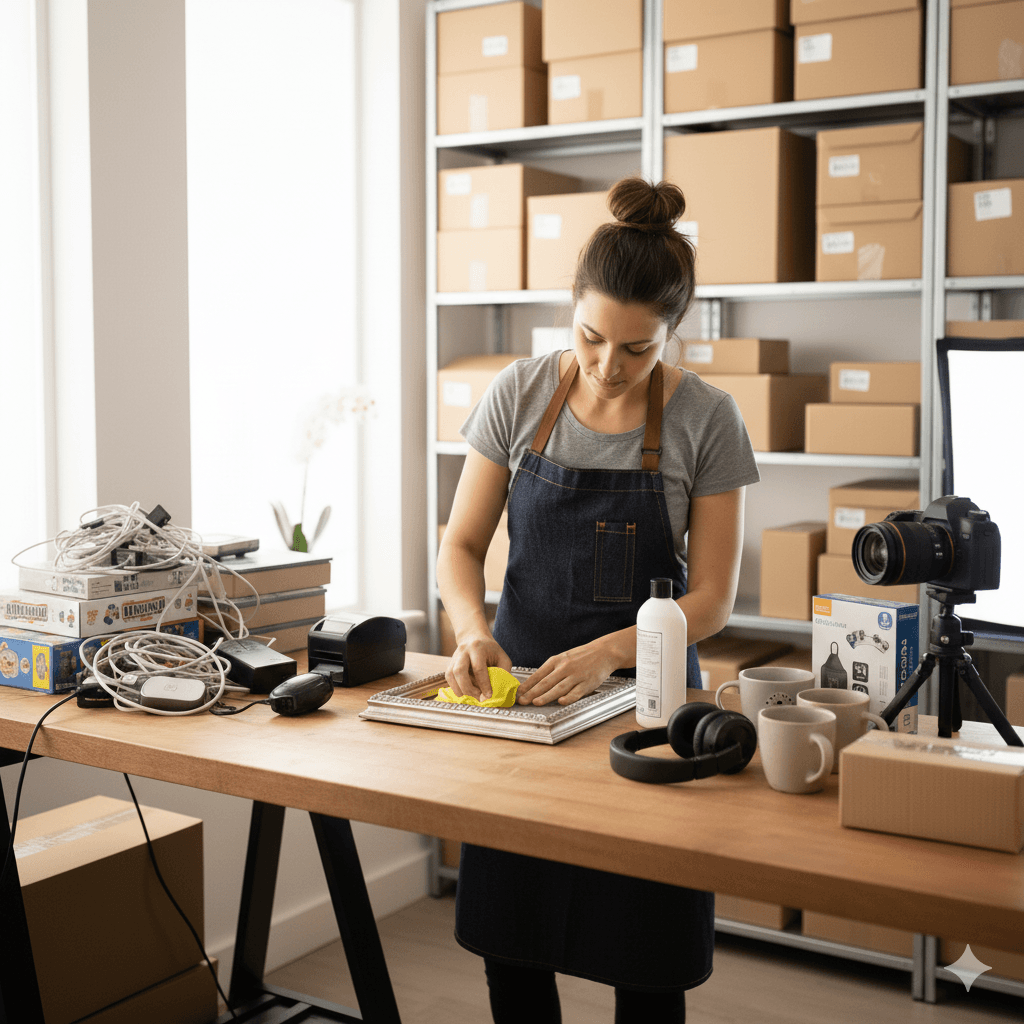Intro
The modern entrepreneur doesn't need massive upfront capital or a specialized degree—they need hustle, market knowledge, and a reliable source of deeply discounted inventory. For thousands of successful online sellers and market flippers, that source is the liquidation store and its sibling, the bin store.
Liquidation stores and bin outlets offer an unparalleled opportunity to acquire customer returns, shelf pulls, and overstock from major retailers at fractions of the original price. This model, often called retail arbitrage or liquidation reselling, is how countless small businesses turn high-risk, unwanted inventory into high-margin profit.
Ready to quit your day job or just generate serious side income? Here is the ultimate 10-step guide to starting and scaling your own profitable reselling business, built brick-by-brick on the foundation of liquidation store deals.
Step 1: Define Your Niche and Target Market
Before you buy a single item, you must define what you will sell and who you will sell it to. The liquidation market is vast, covering everything from electronics to apparel to home goods. Trying to sell everything means mastering nothing.
Action Items:
- Identify a Passion/Expertise: Are you great with electronics repair? Do you understand vintage clothing trends? Your existing knowledge will minimize early mistakes.
- Research High-Demand Niches: Look for products with low return rates and high perceived value, such as small kitchen appliances, tools, branded cosmetics, or specific collectible toys.
- Evaluate Market Saturation: Use platforms like eBay "Sold Listings" to see what similar items are actually selling for. Avoid niches where the profit margin is razor-thin due to excessive competition.
Pro-Tip: Consumer electronics often offer high margins but require rigorous testing and documentation of condition. Home decor and seasonal items are easier to list but require quick movement.
Step 2: Establish Your Legal and Financial Foundation
Even a side hustle needs to be treated like a serious business to ensure compliance and maximize tax benefits.
Action Items:
- Choose a Business Structure: Decide on a Sole Proprietorship, LLC, or other structure. An LLC offers liability protection if a customer sues over a faulty product.
- Obtain Necessary Licenses: Most states require a Resale Certificate (or Sales Tax Permit). This is crucial because it allows you to purchase inventory tax-free from wholesalers and liquidation suppliers since you will be collecting the sales tax from your end customer.
- Open a Business Bank Account: Separate your personal and business finances immediately. This simplifies bookkeeping and tax preparation immensely.
- Set Up a Bookkeeping System: Start simple with software or even a detailed spreadsheet to track every expense (inventory, shipping, supplies) and every sale.
- New/Sealed: Just like it sounds, but rare in bulk liquidation.
- Like New/Open Box: Packaging may be damaged, but the item is pristine and functional. Often from buyers who opened and returned an unused product.
- Customer Returns: This is the bulk of bin store inventory. Items can range from perfect and functioning to broken or incomplete. This is where the risk—and the profit—lives.
- Salvage/Scrap: Heavily damaged, usually non-functional. Only valuable if you plan to strip for parts or repair.
- Use Specialized Tools: Leverage resources like findaliquidationstore.com to quickly locate local liquidation and bin stores near you. This saves time driving and ensures you hit up the highest-volume sources. Use the search function on our homepage at https://www.findaliquidationstore.com/ to instantly find local liquidation and bin stores near you.
- Evaluate Direct Suppliers: For higher volume, research major liquidation auction houses where you can buy full pallets or truckloads directly from retailers. This requires a Resale Certificate (Step 2).
- Visit Stores Repeatedly: For bin stores, observe the "drop" schedules and the flow of merchandise. Build relationships with store staff if possible—they often know when the best new loads are coming in.
- Standardize Supplies: Buy shipping boxes, poly mailers, bubble wrap, and label paper in bulk. Calculate the average cost per shipment for better COGS accuracy (Step 5).
- Organize Inventory: Do not store items in random piles. Assign a small numerical or alphabetical storage location (e.g., Shelf A-1, Bin 3) to every item as soon as you list it. This prevents the nightmare scenario of selling an item you can’t find.
- Ship Fast: Aim to ship within one business day. Fast shipping is a major competitive advantage on all selling platforms.
- High-Quality Photos: Use natural light or a simple, inexpensive light box. Photos should be clear, bright, and show the item from at least five angles, including any defects.
- SEO-Rich Titles: Use every character available in your title. Include brand, model number, color, size, and condition. Example: NEW Open Box Philips Hue A19 White Ambiance Smart LED Bulb Bluetooth HomeKit Compatible.
- Transparent Descriptions: Detail the item's condition honestly. Always include a disclaimer about the item coming from customer returns or overstock and that the box may have damage.
- Cleaning: Removing stickers, dust, and minor stains can instantly double the perceived value of a bin find.
- Testing: For electronics, test all functions (battery, power, buttons). Include "Tested & Working" in your title and description.
- Re-Packaging: If the original box is missing or destroyed, use a plain new box or attractive packaging to make the item feel fresh and professional. A crisp, branded thank-you note is a small detail that pays off in positive feedback.
- Minor Repair: Learning basic soldering or small appliance repair can turn a $1 salvage item into a $50 functional one.
- Track Key Metrics: Monitor your Sell-Through Rate (how fast inventory moves) and your Average Profit Margin across all categories.
- Adjust Sourcing: If apparel is selling at 10% margin but tools are selling at 50% margin, shift your sourcing focus to tools.
- Scale Your Purchasing: Once you have consistent sales data and a reliable selling process, transition from buying single bin items to purchasing small lots or mixed pallets to dramatically lower your cost per unit.
Step 3: Master the Liquidation Grading System
Liquidation inventory is not uniform. Understanding the grading terminology is essential to calculating profit margins and managing customer expectations.
Common Grades to Know:
Rule of Thumb:
Assume 20–30% of customer returns will be salvage, 50% will be functional but require cleaning/repackaging, and 20% will be like-new. Calculate your profit based on the expected sellable quantity.
Step 4: Locate and Vet Your Primary Sourcing Locations
Your inventory source is the heartbeat of your business. Your success depends on consistently buying low.
Action Items:
Step 5: Calculate the True Cost of Goods Sold (COGS)
Many resellers fail because they only factor in the price of the item itself. COGS must be comprehensive.
Example: If you buy a small appliance for $5 at a bin store, but spend $1 on cleaning supplies, $1.50 on shipping materials, and $2.50 in fees, your real COGS is $10.00. If it sells for $20.00, your profit is only $10.00, not $15.00. Use a spreadsheet to track this meticulously.
Step 6: Choose Your Sales Channels and Platforms
Where you sell your items dictates your pricing, fees, and customer base.
| Platform | Best For | Pros | Cons |
|---|---|---|---|
| eBay | Used, Vintage, Electronics, Parts | Massive global reach, auction flexibility. | High seller fees, competitive pricing. |
| Amazon FBA | New/Like-New branded products (if allowed). | High volume, Amazon handles fulfillment. | Strict rules, high fees, limited brand access. |
| Facebook Marketplace/Local | Large items (furniture, tools), Quick cash. | No shipping fees, zero/low selling fees. | Less reach, dealing with local pickups and "no-shows." |
| Your Own Website | Brand building, highest profit margins. | Full control over branding, lowest fees. | Requires driving your own traffic (marketing). |
Start with one platform (usually eBay or local selling) until your process is polished, then expand.
Step 7: Develop a World-Class Fulfillment Process
Sloppy shipping leads to damaged goods, angry customers, and lost profits. Your fulfillment process should be a well-oiled machine.
Action Items:
Step 8: Master Product Listing and Photography
In the reseller world, a great listing sells an average item, and a poor listing fails to sell a great one.
Action Items:
Step 9: Invest Time in Repair, Refurbishment, and Presentation
The biggest difference between a casual flipper and a profitable reseller is the ability to add value.
Value-Add Tasks:
Step 10: Analyze, Adapt, and Scale Your Operation
Your first three months are about learning. Your next three months are about optimizing.
Action Items:
Ready to start sourcing?
Start your reselling journey today by finding the best deals and the highest-volume liquidation stores in your area. Use the search function on our homepage at https://www.findaliquidationstore.com/ to start mapping your sourcing route and find the local gems that will fuel your new business!



